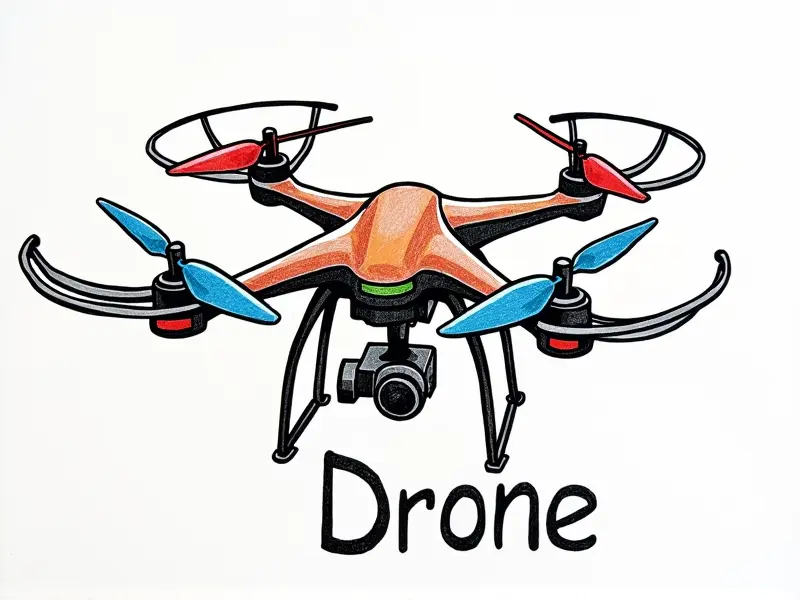How do RC helicopters fly?

Remote control (RC) helicopters are marvels of engineering that captivate enthusiasts with their agility and precision. To truly appreciate the intricacies of these flying machines, it's essential to understand how they achieve flight through a combination of aerodynamics, mechanics, and electronics.
Secrets of RC Helicopter Flight
The secrets behind the flight of an RC helicopter lie in its unique design elements that work together seamlessly. The rotor system is at the heart of this technology, with multiple rotors working in concert to provide lift, stability, and control. By understanding these mechanics, enthusiasts can better appreciate the complexity involved.
Mastering RC Helicopter Lift
Mastery over lift generation is crucial for anyone looking to fly an RC helicopter effectively. The main rotor blades generate lift through their angle of attack (AoA) and rotational speed. As the blades spin, they create a low-pressure area above them, lifting the helicopter off the ground.
Understanding AoA
- The Angle of Attack is the angle between the chord line of the blade and the relative wind.
- A higher AoA increases lift but also generates more drag, which can affect performance.
Understanding RC Helicopter Controls
Flying an RC helicopter requires a thorough understanding of its control system. The collective pitch lever adjusts the angle of attack for all blades simultaneously to manage overall lift and descent. Meanwhile, the cyclic stick controls blade tilt, allowing the heli to move forward, backward, left, or right.
Role of Tail Rotors
The tail rotor counteracts torque from the main rotor, preventing the helicopter body from spinning uncontrollably. By adjusting the pitch of the tail rotor blades, pilots can control yaw movements and maintain stability in flight.
Beginner's Guide to RC Helicopter Flight
Newcomers to RC helicopters should start with small models that are easier to handle. Begin by practicing basic maneuvers such as hovering, forward and backward movement, and turning. Gradually increase the difficulty of your training exercises as you become more comfortable.
Practice Tips for Beginners
- Start in a spacious area with soft ground to minimize damage from crashes.
- Learn the basics of throttle control before attempting complex maneuvers.
- Watch tutorial videos and read manuals thoroughly before flying.
RC Helicopter Stability in the Air
Maintaining stability is key to successful RC helicopter flight. Proper balance between lift, thrust, drag, and weight ensures smooth operation. Pilots must constantly adjust controls based on wind conditions and other environmental factors.
Influence of Wind Conditions
- Headwinds increase lift but reduce forward speed.
- Tailwinds decrease lift and may cause instability if not managed properly.
Top Tips for Flying RC Helicopters
To enhance your flying skills, follow these tips:
Pre-flight Checks
- Inspect the blades for damage or wear.
- Ensure all servos and motors are functioning correctly.
- Calibrate the transmitter and receiver before each flight session.
Post-flight Maintenance
- Clean debris from the rotor blades and fuselage.
- Lubricate moving parts to prevent wear over time.
- Store your RC helicopter in a dry, dust-free environment.
The Physics Behind RC Helicopter Flight
Flying an RC helicopter involves complex physics principles. Newton's laws of motion and Bernoulli’s principle play significant roles in lift generation and stability control. Understanding these concepts can help pilots make informed decisions during flight.
Newton's Laws of Motion
- Action-Reaction: The force exerted by the main rotor creates an equal and opposite reaction, causing the helicopter to rise or descend.
- Inertia: Objects in motion tend to stay in motion unless acted upon by external forces. This applies to both lift generation and maneuvering.
Bernoulli’s Principle
The shape of the rotor blades creates a pressure difference between the upper and lower surfaces, resulting in lift as air moves faster over the top surface compared to the bottom.
How Do RC Helicopters Hover?
Holding an RC helicopter steady in mid-air requires precise control. By maintaining a constant AoA and adjusting collective pitch, pilots can achieve stable hovering conditions. Small adjustments are necessary to counteract wind gusts or other disturbances.
Techniques for Perfecting the Hover
- Practice: Spend time practicing hover techniques in various weather conditions.
- Skill Development: Focus on developing muscle memory through repetitive practice sessions.
- Patience: Mastering hovering takes patience and persistence, but it is a crucial skill for advanced flying.
RC Helicopter Control Explained
The control system of an RC helicopter consists of multiple components working together to provide precise maneuverability. The transmitter sends signals to the receiver, which in turn activates servos controlling various parts of the aircraft.
Main Components
- Transmitter: Sends commands via radio waves.
- Receiver: Receives and decodes signals from the transmitter.
- Servos: Actuate control surfaces based on received signals.
Vertical Flight with RC Helis
Moving vertically is one of the most challenging aspects of flying an RC helicopter. Proper use of collective pitch and throttle adjustments allows for smooth vertical ascents and descents.
Tips for Vertical Maneuvers
- Gradually increase or decrease lift to control ascent/descent rates.
- Avoid sudden movements that can cause instability or loss of control.
- Maintain a steady throttle setting while making pitch adjustments.
Understanding RC Helicopter Tail Rotors
The tail rotor is essential for anti-torque and yaw control. By adjusting the blade pitch, pilots can manage rotational forces generated by the main rotor, ensuring stable directional movement.
Tail Rotor Functionality
- Yaw Control: Adjusting the tail rotor controls the helicopter's heading.
- Anti-Torque: The tail rotor counteracts torque from the main rotor, preventing unwanted rotation.
Conclusion
Flying an RC helicopter is a rewarding yet challenging endeavor that requires dedication and practice. By mastering lift generation, understanding control systems, and honing your skills through consistent training, you can become proficient in operating these fascinating machines. Embrace the physics behind flight, learn from experienced pilots, and enjoy the thrill of vertical aviation.

